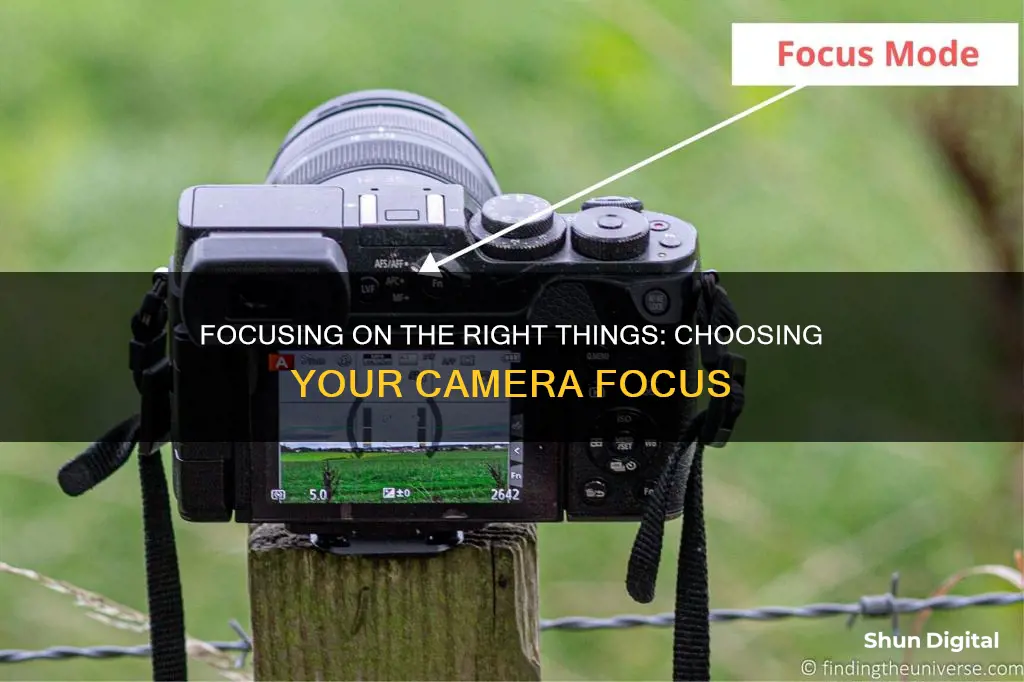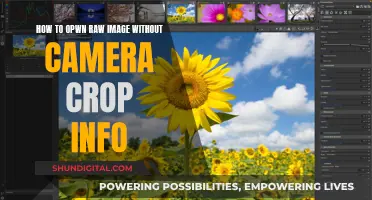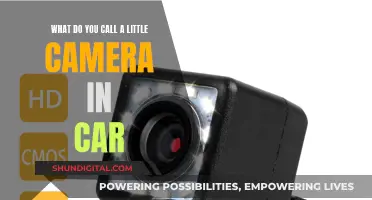
Choosing the right focus mode is an essential step in improving your photography. The focus mode you select can make or break your photo. There are two main focus modes: manual focus mode and autofocus mode. Manual focus mode is when you adjust the focus of your camera lens manually. Autofocus mode is when the camera focuses for you.
Manual focus mode is useful in low-light situations or when your camera struggles to focus automatically. It also gives you full control over the creative aspects of focus. Autofocus mode, on the other hand, is a time-saver, especially when shooting moving subjects. It is also more accurate in many cases, such as tracking focus on a moving subject.
There are different types of autofocus modes, including single-point autofocus, continuous autofocus, and hybrid autofocus. Single-point autofocus lets you manually select a single point in your frame for the camera to focus on. Continuous autofocus maintains focus on your subject even when it is moving. Hybrid autofocus combines the benefits of both phase-detection and contrast-detection autofocus systems, making it speedy and accurate.
Different camera brands have different names for these autofocus modes, so it is important to familiarise yourself with your camera's specific focus modes and how to use them effectively.
| Characteristics | Values |
|---|---|
| Focus modes | Manual focus, autofocus, single-point autofocus, continuous autofocus, hybrid autofocus |
| Focus point modes | Single point, zone/multi, auto |
| Drive modes | Single shot, continuous low, continuous high |
| Aperture | Large, small |
| Focus point | Eyes, area of contrast |
| Focus ring | Zoom, manual |
| Focus distance | Minimum, maximum |
What You'll Learn

Manual Focus Mode (MF)
Manual focus mode is relevant even today because autofocus can make mistakes or select the wrong area/subject to track. It is also more reliable than autofocus when shooting in low-light conditions and in some other genres like macro, architecture, and stills.
Manual focus is when you adjust the in-focus region to be closer or further from the camera. Usually, this is done by rotating the focusing ring on your lens while autofocus is disabled.
Manual focus is when you move the focusing ring yourself to change how far away the lens is focused. It gives you full control over the creative aspects of focus, like when you’re going for that dreamy, blurred background effect.
Manual focus is best when you want the focus distance to remain constant. For example, by autofocusing on a spot on a racetrack and then switching the lens to MF, you can take a sequence of photos of cars passing that spot, safe in the knowledge that the AF system won't refocus the lens elsewhere.
Manual focus is also the only option when the camera can't lock on. Some lenses allow for full-time manual focusing, so you can correct any autofocusing errors made by the camera on the fly, without having to switch the lens to MF mode.
Manual focus is also useful in low-light situations, such as candle-lit receptions or dark streets, which can present a challenge to the autofocus system. It is also useful for astrophotography, which combines very low light with a need for very precise focus.
Manual focus can also be useful when the autofocus system is getting confused, for example, by a low-contrast subject, like a dark subject on a black background, or a transparent subject.
Manual focus is also useful for shallow depth-of-field photography. Some lenses, particularly at fast apertures like f/1.4 and telephoto focal lengths, have a very narrow depth of field. This narrow zone of focus can challenge autofocus systems.
Manual focus can also be a great option when working in a studio with still subjects. With your camera typically on a tripod, manual focus is a lot easier, and gives you the ability to be very precise with your focus placement.
Best Cameras for RAW Photography Enthusiasts
You may want to see also

Autofocus Mode
Autofocus, or AF, is a practical option that allows you to focus much faster. You can pay more attention to other things like composition and exposure.
There are two types of AF systems: Active and Passive. The Active AF system works by shooting a red beam at the subject, then bouncing that light back to the camera to figure out the distance between the camera and the subject. Passive AF, on the other hand, uses either "Phase Detection" or "Contrast Detection" (or a combination of both) for detecting contrast.
Most cameras have two different kinds of focusing modes: single-mode focusing and continuous focusing mode. The terminology varies depending on the camera manufacturer.
Single AF Area Modes (AF-S in Nikon Cameras or One Shot AF in Canon Cameras) is a good option for taking images of stationary objects in the frame, or in low-light conditions. In this mode, once you lock focus on your subject, the camera will not retain focus if your subject suddenly moves.
Continuous Autofocus modes (Nikon: Continuous AF-C / Canon: AI Servo) are great for capturing subjects in movement like sports, animals or pets on the go, or even people. In this mode, once you lock focus on a stationary subject, the camera will do its best to follow your subject, keeping them in focus. The camera detects the movement of your subject and refocuses constantly to keep it in focus as long as you are pressing the shutter halfway.
Automatic autofocus modes (Nikon: AF-A / Canon: AI Focus AF) let the camera decide if the subject is moving or not and will alternate between single focus and continuous focus. While this gives you more control by letting the camera change from Single to Continuous AF, it will be harder to lock the focus and track the subject.
Single Point Area + AF-S Mode is perfect for stationary subjects such as landscapes and still photography. You choose one focus point, and the camera won’t refocus.
Single Point Area + AF-C Mode is ideal for when your subject is moving, like animals, kids, or sports. You select one focus point, and your camera will refocus if needed if the subject moves. It will refocus only on the selected focus point, so you need to track the subject.
Dynamic Area + AF-C Mode is useful when the subject is moving in an unpredictable way. You select one focus point, but the camera will also use the surrounding ones if the subject moves.
How Truck ATS Can Benefit From Camera Mode
You may want to see also

Single-Point Autofocus
- Nikon: Single-Point AF
- Canon: Manual Selection: 1-point AF
- Sony: Flexible Spot or Center
- Fujifilm: Single Point
- Leica: Spot or 1-Point
- Panasonic: 1-Area
- Pentax: Select
To use Single-Point Autofocus, you will need to manually select a single point in your frame for the camera to focus on. This can usually be done by using a joystick or similar control on your camera. Once you have selected the focus point, you can then half-press the shutter button to focus and then fully press the shutter button to take the photo.
Spy Camera Battery Life: How Long Does It Last?
You may want to see also

Continuous Autofocus (Continuous Focusing Mode)
Continuous autofocus, also known as Continuous Focusing Mode, is a setting used for capturing moving subjects. In this mode, the camera will continuously adjust its focus on the subject, even if it is moving, as long as you hold down the shutter button halfway.
Different camera brands have different names for this mode: Continuous-Servo AF (AF-C) in Nikon, AI Servo AF in Canon, Continuous AF in Sony, AF-C in Fujifilm, Continuous AF in Leica, AFC (Auto Focus Continuous) in Panasonic, and AF.C in Pentax.
Continuous autofocus is ideal for shooting sports, wildlife, pets, and children, or any situation where the subject is in motion. It is also useful when the subject is moving towards or away from the camera, or moving rapidly in random directions.
However, it is important to note that continuous autofocus uses more battery power, and the camera may not always accurately predict the movement of the subject, which can result in some blur.
To use continuous autofocus, press the shutter button halfway to engage autofocus. The camera will then continuously adjust the focus on the subject as long as you hold the shutter button halfway down.
When using continuous autofocus, it is recommended to combine it with a zone or multiple-point focus area. This means using a group of autofocus points surrounding the manually selected focus point to track the moving subject.
Some cameras also offer a feature called "focus tracking with lock-on," which allows you to set the length of time the camera will ignore an object that blocks your subject, such as a referee running in front of a basketball player.
By using continuous autofocus, photographers can effectively capture moving subjects and ensure their photos are sharp and focused.
Traffic Camera Tickets: Payment Deadline and Consequences
You may want to see also

Manual Shooting Mode and Manual Focus
Manual Shooting Mode is one of the five main shooting modes on most cameras. The others are Full Automatic Mode, Program Mode, Aperture Priority Mode, and Shutter Priority Mode.
Manual Focus, on the other hand, is where you take control, twist the lens's focus ring, and change the point of focus. You can override your lens's autofocus mechanism and adjust the focusing via a ring on the lens barrel.
Manual Focus is useful in certain situations, such as:
- Macro and close-up photography
- Low-light situations
- Shallow depth-of-field scenarios
- Street photography
- Creative effects
- Wide-angle photography
- Panorama photography
- Hyperfocal distance photography
- Low-contrast situations
However, Manual Focus is not always the best option. If you are dealing with moving subjects or fast-paced scenarios, focusing manually may be fruitless. In these cases, autofocus is generally more reliable.
The Evolution of Computer Cameras: How Are They Made?
You may want to see also
Frequently asked questions
There are two main types of camera focus: manual focus and autofocus. Autofocus can be further divided into single-point autofocus, dynamic-area autofocus, and auto-area autofocus.
Manual focus is best for still life scenes, landscape photography, studio photography, and macro photography. It gives you full control over the focus and allows you to achieve very precise adjustments.
Autofocus is generally more convenient and faster than manual focus. It is useful when shooting moving subjects, such as in sports, wildlife, or event photography.
On most cameras, you can switch between manual and autofocus by adjusting the settings on your lens. Look for a switch labelled "AF - MF", "A - M", or something similar.
Here are some tips to help you achieve sharp focus:
- Use a large aperture, especially in low light conditions.
- Focus on areas with high contrast.
- When photographing people, focus on their eyes.
- For moving subjects, use continuous autofocus mode.
- For still subjects, use single-point autofocus mode.







